The Ford Puma, has now been reborn as a small SUV. It sitsabove Ford’s Eco Sport but below the Cougar. It’s a rival toRenault’s Kaptur, the Nissan Juke and Volkswagen’s T-Roc. The key points about the new Puma are that its based on the Fiesta but sits 30 millimetres higher, it’s also longer, taller, wider and has greater distance between the front and rear wheels. There’s also a trick up its sleeve in the boot and under the bonnet too. The interior is more modern but there are more bespoke touches too.
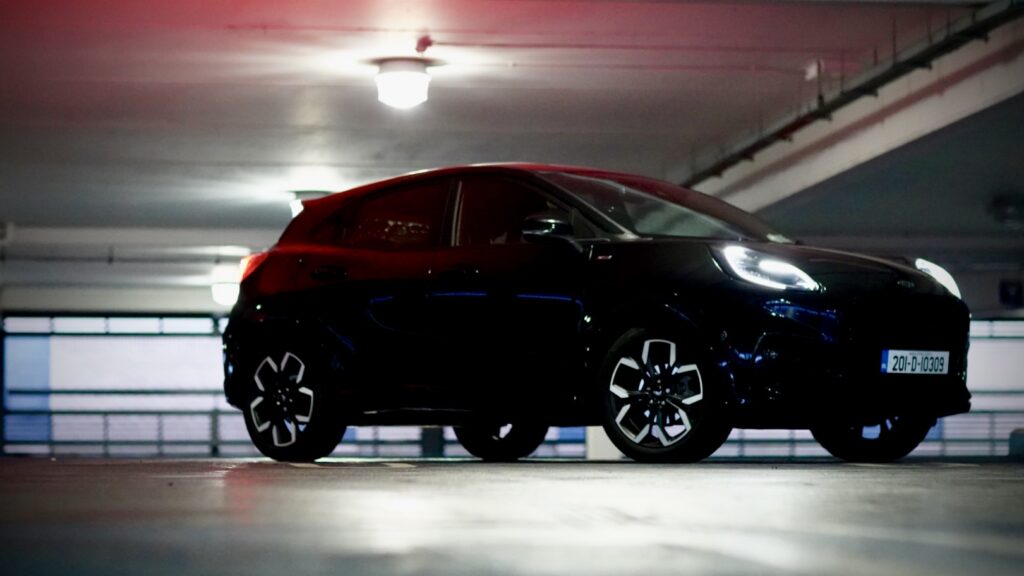
Special mention : Extra 80 litres of storage space in the boot for activity clothes, muddy clothes/boots etc, also allows for drainage, is absolutely genius. Ford have upped the style stakes, inside and out and it looks great. The mild hybrid technology is imperceptible. The new digital instrument cluster, while simple, is an absolutely lovely new addition. The B&O 10 speaker 575-watt audio system is a great addition.
Needs work : 125 bhp feels a little under powered, steering could be lighter with better feedback. The reverse gear is over by 6th instead of 1st.
Specs: As tested
| Max Power 125 bhp | Petrol / Manual |
| 0-100 km/h in 10.2 seconds | Road Tax €270 |
Price Starting – €24,835.00 ST Line – €27,917.00 With options : Agate Black €700, Tailgate €700, Self leveling LEDs €900, Driver Assist Pack €1,500 Total : €31,717 | Boot 401-1,161 litres |
There’s a real flowing sense to the design and you definitely can’t accuse the Puma of being a jacked up Fiesta because its looks are far removed from that classic hatchback shape. The Puma is a real looker and if this is how Ford means to continue, lets have more of it.
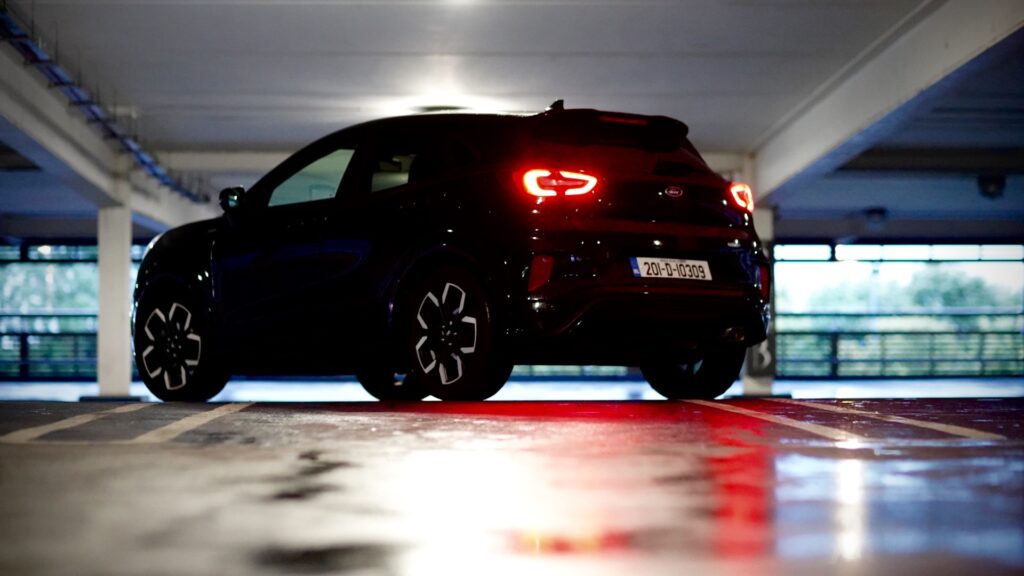
The Puma is very distinctive but yet it still manages to keep some of the old Puma design in mind. The Puma’s digital driver display is very impressive. The display itself has crisp and clear graphics that are easy to read. There’s not much to configure but it’s easy to cycle through the different menus and you’ve got two Trip menu’s which is great if you like to keep track of the stats.
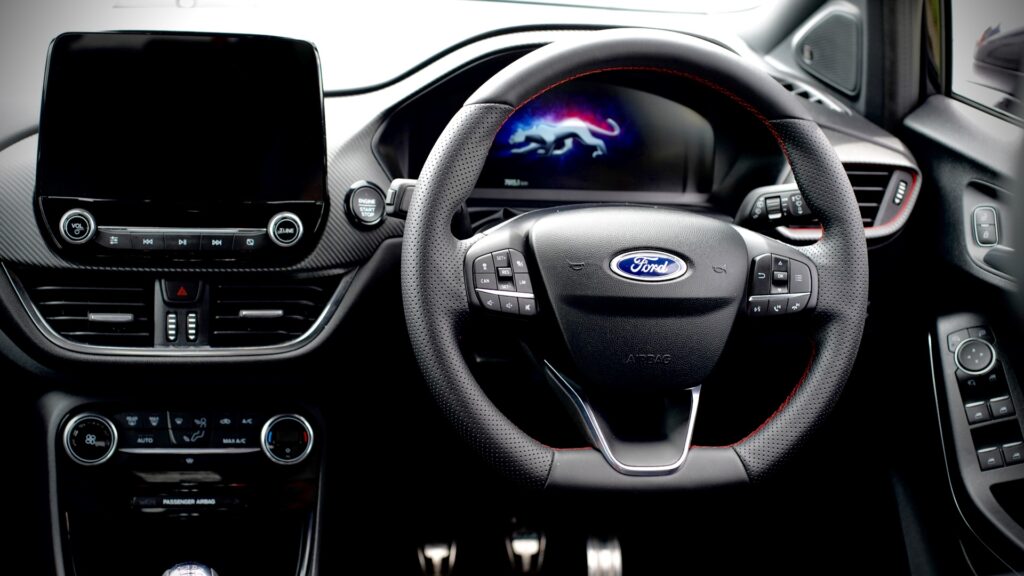
Elsewhere in the cabin the interior quality is decent where Ford has modernised the style and by delivering it with soft touch materials and carbon effect trim, the perceived quality is quite good too. The driving position is fine, it’s higher than normal so you get that great SUV view.
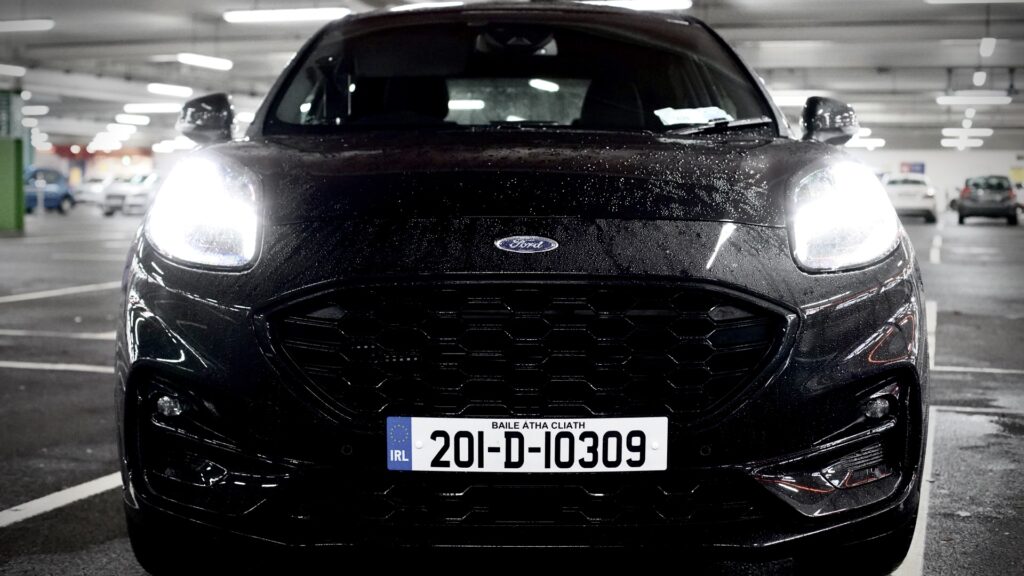
The seats are supportive on the motorway but may not take you to Dingle in one sitting. You get a great range of adjustment in the steering wheel and in the driver’s seat in order to get the most comfortable driving position. One slight drawback of the driving position is that the pillars are pretty thick which reduces visibility somewhat and that high bonnet affects your ability to see what’s beneath each corner easily.
The Puma comes with Fords SYNC 3 infotainment system and the graphics are well designed, extremely modern looking and the system itself is solid. You get Apple CarPlay and Android Auto so you can bypass the on board system if you wanted. There is also wireless phone charging available as standard.
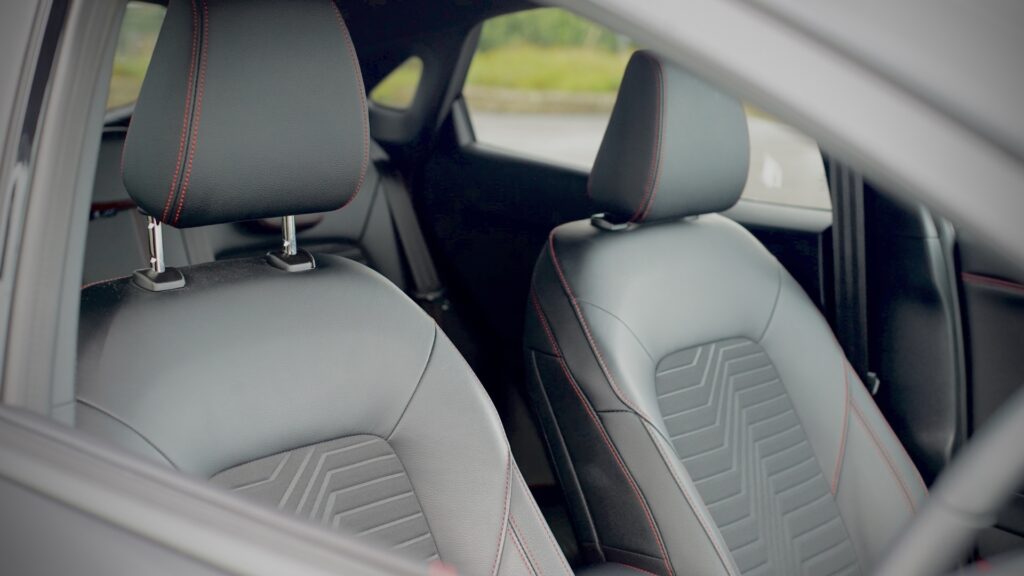
There’s good space up front in the Puma so you won’t have any problems getting comfortable, you’ve got a good amount of headroom and there’s plenty of storage space dotted around and under the armrest there’s a cubby with a USB port. There are also the standard cup holders, somewhere for the key (not always standard but a godsend when it comes to reducing rattles in the cabin) and where the wireless phone charging cubby is, there’s another small but useful tray along with decently sized door bins.
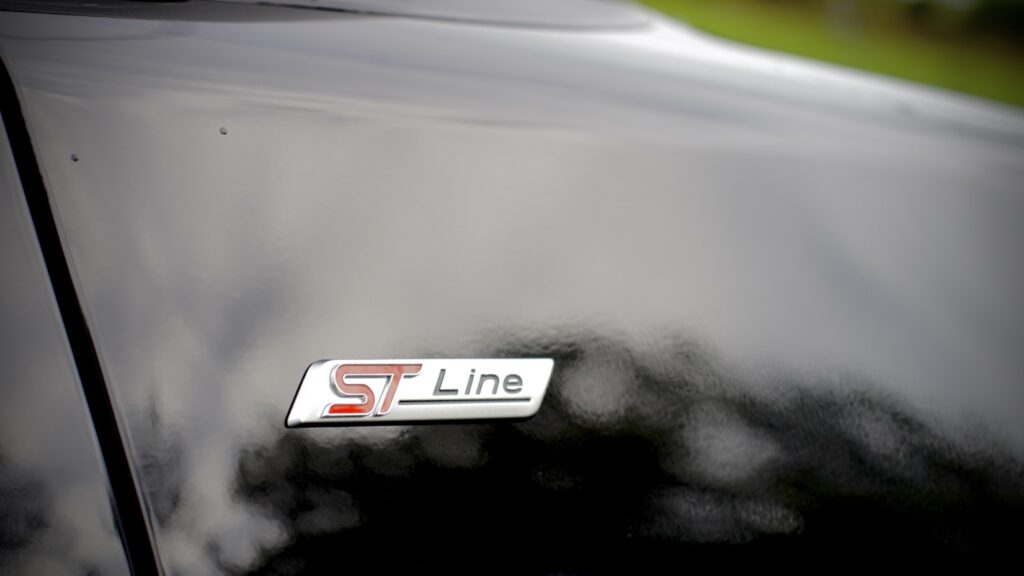
Among its immediate rivals, the Ford Puma is actually the tightest for space in the back for adults. You might find your knees brushing against the seats in front depending on who’s sitting in those seats. The small windows don’t really help give a sense of space and while the seats don’t fold fully flat, they do split 60/40.
The boot of the Ford Puma is one of the most impressive areas of this car, with such practical touches such as the low loading lip. You can fit six carry-on sized suitcases into the back and also lift up the floor to prop it up to reveal more space (80 litres!) under the boot floor which is enough for an extra two suitcases or a couple of sets of golf clubs. It’s also handy if you have expensive gear that you really don’t want on display in the boot.
Now here’s the ingenious part for adventurers, in this extra 80 litres of space, you can take the floor out and underneath there’s a plug which means you can hose down it down if it gets muddy and the water will drain out properly. Whoever came up with this, needs a raise.
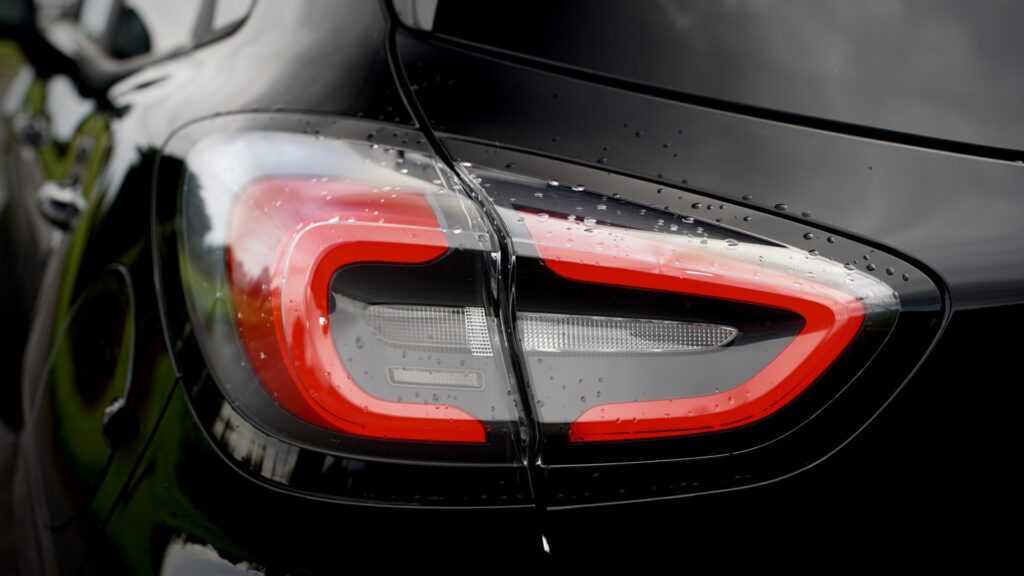
The Ford Puma mild hybrid system gives good fuel economy as well as pumping out less co2 than most of its rivals. There are three trims to choose from in the Puma lineup, there’s Titanium, ST Line and ST Line X. The entry-level Titanium has a lot of kit as standard including rear parking sensors, high-beam assist, a heated windscreen and lumbar support. Ifyou choose the ST Line you get Sport Suspension and digital display along with bigger alloys, part leather seats, climate control, privacy glass and a brilliant Bang & Olufsen sound system.
The Puma also received a full 5 star crash safety Euro NCAP rating and gets automatic emergency braking and lane keeping assist as standard. You can also option adaptive cruise control and blind spot monitoring as part of the optional driver assist pack (€1,500).
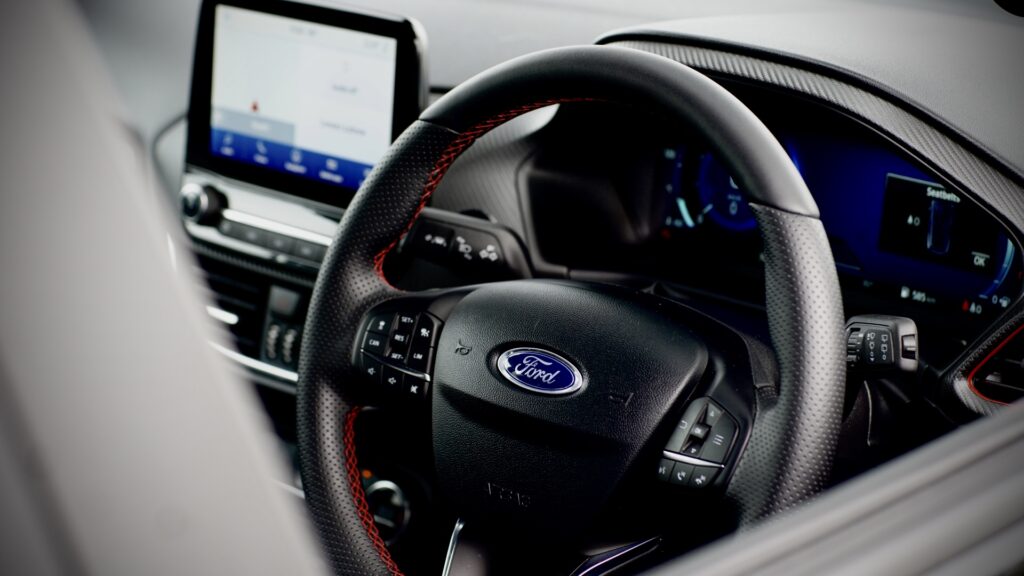
The original Puma had a brilliant reputation when it came to its on-road ability, as this is a higher riding small SUV the ST Line-X Puma is still adept, the steering is responsive and accurate for a 1.2 litre turbocharged petrol engine, if a little gruff.
The 48 volt mild hybrid system deserves a special mention, this shuts the engine off when you’re slowing to a stop while keeping steering and the brakes supplied with power so it saves fuel at every stop but yet works immensely better than most stop/start systems. Normally when stopped at traffic lights, with a stop-start system when you press the clutch, it engages the engine and then off you go. In the Puma it’s when you press the clutch and then put it into gear where the engine kicks back in so smoothly you barely notice it.
When you then go to move, a small electric motor eases the load which is a small step on the way to full electrification. It’s also worth pointing out that in real-world tests the Puma was significantly more frugal than an equivalent Juke.
In the ST Line Puma, the ride is firm so it’s pretty well controlled but if you were to go from driving a T-Roc and then jump into the Ford Puma you would notice that it feels firmer. There is some road noise noticeable when travelling on the motorway but it’s not enough to make it uncomfortable or unpleasant and also the engine note that you get could do with being a little less coarse.
Decent handling, a gutsy engine and clever mild hybrid technology, the new Ford Puma offers a mix of frugality and ingenuity plus it’s well priced, well equipped and it’s as practical as it is stylish.
